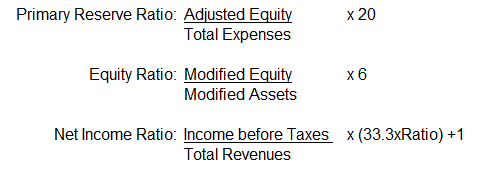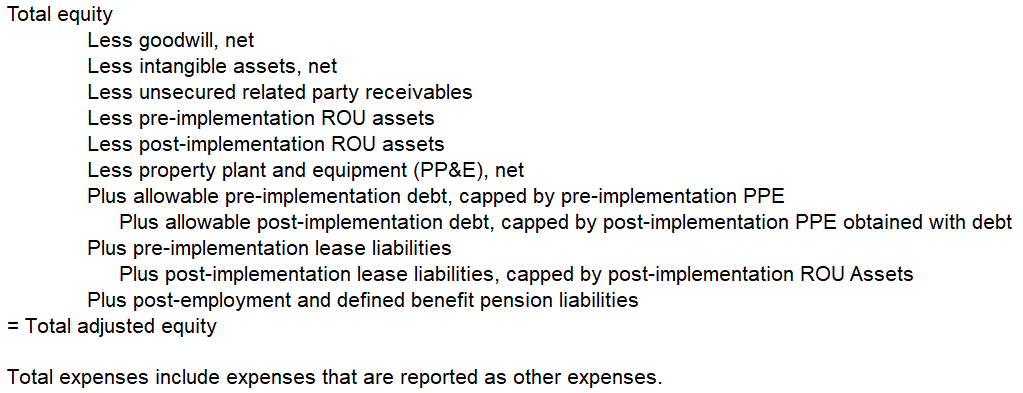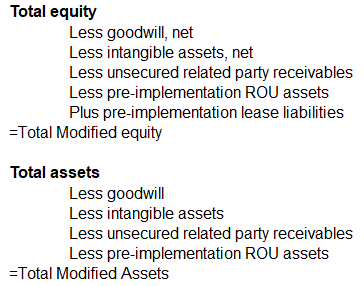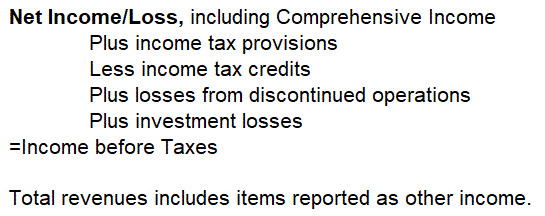Institutions of higher education, whether traditional universities or proprietary trade schools, are well familiar with U.S. Department of Education (ED) oversight. Annual filings and notification triggers are par for the course.
For precisely this reason, it’s critical that we understand how the department assesses your finances so that you can prepare for potential issues. When reviewing annual financial statements ED uses the Composite Score Ratio (CSR) as its primary measure of financial health. Triggers in the new Financial Responsibility rules can require an institution to recalculate its CSR mid-year, leading to additional ED financial oversight, monitoring, or other controls. In this article, we break down the basics of the score and how it is calculated.
Proactive schools work with McClintock & Associates to project their CSR prior to their fiscal year end. This article will cover the following topics to help proprietary schools better understand the CSR and how it impacts them. We will cover:
CSR outcomes and impact
CSR components
CSR unique definitions
CSR formulas for each component
Composite Score Ratio Outcomes and Impact
The CSR was introduced in 1997 with the intention of providing a more standardized method to evaluate the financial strength of an institution. While separate formulas exist for proprietary and non-profit institutions, the basic calculations and theory are the same. This article is focused on the calculation for proprietary schools. The CSR is calculated based on three components of a school’s financial statements submitted via eZ-Audit. The results can range from (1.0) to 3.0. The results rounded to the first decimal are divided into three buckets:
- Passing – score 1.5 or greater
- In the Zone – score between 1.0 to 1.4 (if school was passing prior year)
- Failing – score below 1.0
Institutions with a passing score are deemed financially responsible and operate without additional oversight due to the CSR. Institutions with scores between 1.0 to 1.4 are considered financially responsible but are deemed to require additional oversight. These schools are subject to cash monitoring (typically Heightened Cash Monitoring 1) and other participation requirements. Institutions can operate in the zone for up to three years, after that point they are deemed to be failing. Institutions with a failing CSR may continue to participate in Title IV but typically are required to not only follow HCM1 (or more stringent cash monitoring), but are also required to post a letter of credit equal to at least 10% of the Title IV received in the previous year.
Components of the Composite Score
The CSR has three components that contribute set weightings to the overall score:
- Primary Reserve Ratio (30%)
- Equity Ratio (40%)
- Net Income Ratio (30%)
Each component is its own ratio, which gets multiplied by a ‘Strength Factor’ that is unique to each component. Just like the overall score, the outcome for each component is limited to be between (1.0) to 3.0, before applying the weight to it. The ratio, strength factor and weighting for each component are as follows:
Definitions Unique to Composite Score – Pre and Post-Implementation
As part of Negotiated Rulemaking in 2018, ED incorporated changes to the CSR to account for the impending implementation of a new lease standard and to introduce new regulations to define when debt designated as long-term was obtained for the purpose of acquiring fixed assets. During the negotiations, institutions raised concerns about these changes significantly impacting their CSR without adequate time to prepare. As a compromise, ED outlined when the new standards were required to be implemented.
Several inputs, outlined in more detail below, are required to be designated as pre- or post-implementation. Pre-implementation property, plant and equipment, and debt amounts are designated by the last audited financial statements submitted to ED via eZ-Audit prior to July 1, 2020. Typically, this would include all fiscal years ending on December 31, 2019 or before. However, due to the Covid pandemic that started in March 2020, ED extended the due date for schools for the December 31, 2019 fiscal year. For institutions that utilized the waiver, pre-implementation amounts are set by their 2018 audited financial statements. Pre-implementation leases are defined by leases that were entered into before December 15, 2018, and have not been modified.
As illustrated by the formulas outlined below, three types of inputs must be designated as pre- or post-implementation:
- Property Plant and Equipment (PPE)
- Long-term Debt
- Lease Standard balances
- Right-of-Use Assets (ROU Assets)
- Lease Liabilities
The 2018 Negotiated Rulemaking also introduced a new requirement for institutions to include a supplemental schedule with their audited financial statements that discloses the inputs to calculate its CSR. Part of the details included in the supplemental schedule disclose the rolling pre- and post-implementation balances for PPE, long-term debt and the lease standard balances. ED also published a sub regulatory question and answers document on April 9, 2020.
Formulas for Each Component of the Composite Score
Below we provide the formulas to determine the ratios for each component of the CSR.
Calculating the Primary Reserve Ratio
The Primary Reserve Ratio compares an institution’s Adjusted Equity to its Total Expenses. The details below outline how to calculate Adjusted Equity:
Calculating the Equity Ratio
The Equity Ratio compares an institution’s Modified Equity to its Modified Assets. The details below outline how to calculate Modified Equity and Modified Assets:
Calculating the Net Income Ratio
The Net Income Ratio compares Income before Taxes to Total Revenues. The details below outline how to calculate Income Before Taxes:
The regulations specify that investment gains are included in revenue and investment losses are excluded from total expenses. This was done as ED realized that market value changes in investments are outside the control of a school. However, changes in the value of an interest rate swap contract are included in revenue and expenses — depending on whether the impact is positive or negative, respectively.
Final Steps to Calculate the Composite Score
Now that you know how to calculate each ratio, it’s time to apply the Strength Factor and weighting to calculate each component of the CSR and add them together. Remember, the result for each ratio has a floor of (1) and ceiling of 3. The formulas are:
Primary Reserve Ratio x 20 x 30%
Equity Ratio x 6 x 40%
[(Net Income Ratio x 33.3) + 1] x 30%
Add the three results together to know whether your institution is passing, in the zone or failing.
Looking for additional guidance?
If you have questions or challenges navigating the CSR calculation, considering a Change-In-Ownership, or any other financial or compliance issues related to higher education, we’re here to help. Reach us with questions today.




